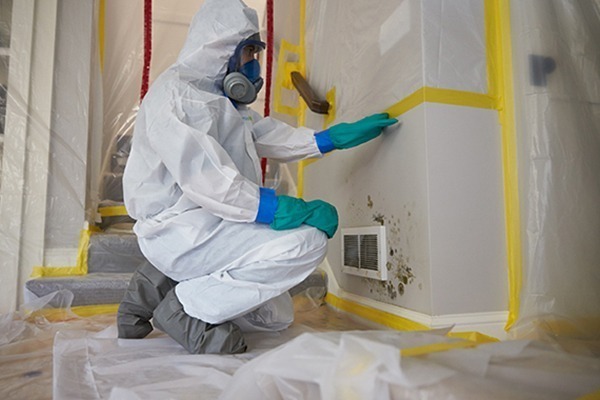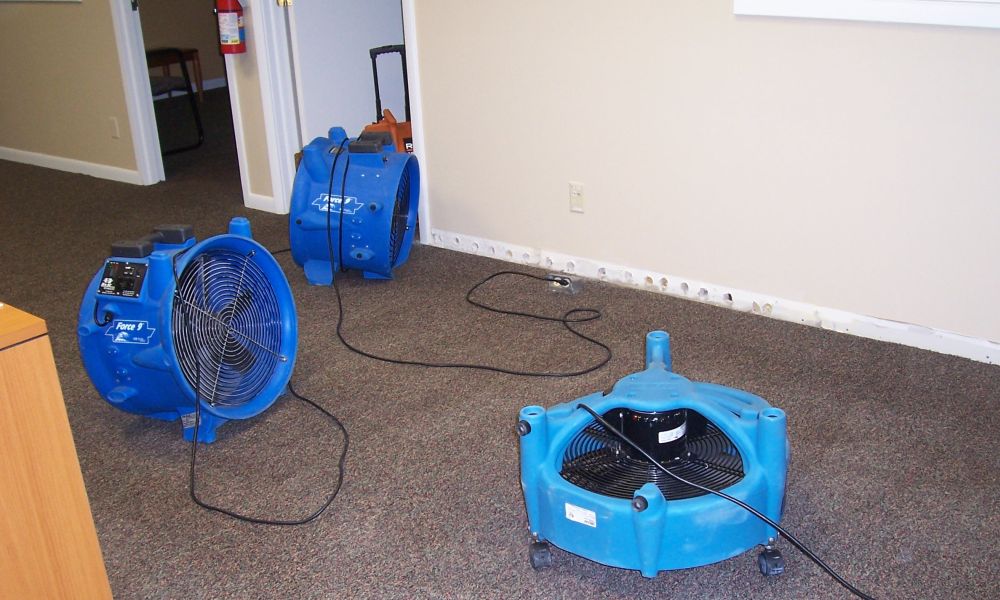Water damage can happen unexpectedly. It could be due to heavy rainfall, burst piping, or leaky rooftops. Whatever the cause, a critical step in the recovery process involves drying out your house properly. Failing to take these measures can lead to a variety of problems, such as mold growth, structural damage, and long-term risks to your health. This post will discuss why it’s important to dry your home immediately after water damage. We’ll also explore how water damage repair in places like Raleigh is crucial for preventing further problems.
Why Drying Out Is Important?
Water that enters a home can seep into drywall, carpets, and wood. The longer water is allowed in, the worse the damage will be. This is because:
Preventing Mold Growth
Mold thrives on damp surfaces. If you fail to remove water and do not dry your home properly after a flooding or leak, mold can grow within 48 hours. Mold can damage your home’s structural integrity and pose serious health threats to you and your family. Inhaling mold spores can cause respiratory problems, allergies, or other health problems.
For water damage restoration to be successful in Raleigh or elsewhere, the area must be dried quickly and completely to reduce the possibility of mold. Professional Raleigh Water Damage Restoration Company uses specialized tools, such as industrial dehumidifiers or air movers, to ensure moisture is quickly removed.
Protecting The Structure And Building Of Your Home
When it comes down to building materials, water can be one of their most destructive forces. When wood absorbs water, it can expand, warp, and even rot. These structural damages can damage your home’s walls, floors, and foundation. They may also lead to expensive repairs.
If you dry out your home immediately, water will not be absorbed as deeply. Professional water damage teams use moisture sensors to ensure the home has been dried completely, even in difficult-to-reach locations like behind walls and under floors.

Electrical Damage Prevention
Water and electrical systems do not mix. Electric systems in your home can be compromised by water damage. The electrical system in your home may be compromised if water gets into the outlets, appliances, wall wiring, or other areas. This can lead to electrical fires and short circuits in your home.
The drying and restoration process includes ensuring all electrical systems are safe and dried before they are used. The water damage in the Raleigh process is vital for homes that have electrical systems that may have been damaged by moisture.
Avoiding Second Damage
Secondary damage refers to the additional harm that can occur if you don’t address the issue quickly after the first water intrusion. This can include damage such as rotting timber, corrosion of metal, and peeling paint. These problems can cause damage to spread outside the initial area, leading to a much more expensive and extensive restoration.
Drying out your home as soon as possible after a water leak is important. This will prevent secondary issues and save money, time, and stress.
How Water Damage Restoration Experts Can Help?
While it’s easy to think that drying your home by opening windows or using fans at home is enough, this isn’t always the case. Professional water damage teams have all the equipment and knowledge to ensure your home has been thoroughly dried. They approach the process in this way:
Assessment
The first step is to assess the extent. A trained professional inspects all affected areas with moisture meters, which can detect moisture levels not visible to the naked eye. They can then develop a plan to dry your home that’s tailored to your family’s needs.
Water Removal
Restoration teams can quickly eliminate standing water using industrial pumps and vacuums. This is the most important step because the longer water is left to stand, the greater the risk of structural damage and mold growth. Professionals know to remove excess water without causing further damage to surfaces such as upholstery and carpets.
Dehumidification
The structure must be dried out after the standing water has been removed. Restoration professionals use high-powered air movers to remove moisture. These machines continue to run until all surfaces of the home have dried completely. The machines are not only for drying surfaces; they can also help remove moisture from building materials.
Conclusion
Water damage may be catastrophic, but by completing a thorough drying cycle, you can avoid the worst of it. Drying out your house and getting professional help can help protect it from long-term damage, such as structural problems and mold. Contact a Raleigh water restoration team immediately if you have water damage. This will give you peace of mind and ensure your home’s safety.

